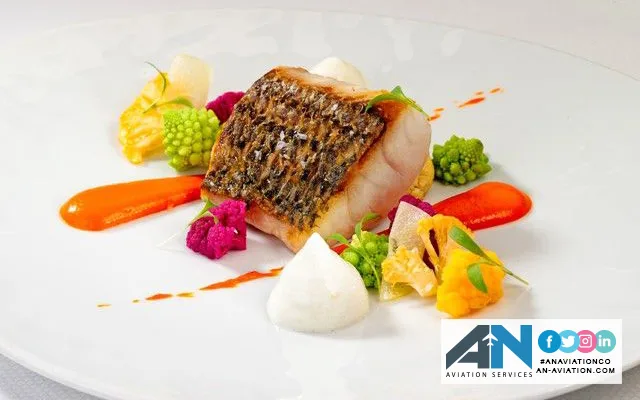
When it comes to airline food, reactions can be all over the map—some love it, some tolerate it, and some wish they could avoid it altogether. From gourmet dishes in first class to lackluster meals in economy, the experience of eating at 30,000 feet can vary greatly. But what makes airline food such a mixed bag?
In this blog post, we’ll explore the good, the bad, and the downright ugly of airline food, diving into why in-flight dining can be hit or miss and what airlines are doing to change it.
The Good: Elevated Dining Experiences and Thoughtful Menus
First, let’s look at the good. Some airlines are making great strides in transforming in-flight dining from an afterthought into an experience passengers look forward to. Especially in first class and business class, airlines are partnering with top chefs and focusing on quality ingredients to elevate their meal offerings.
Gourmet Experiences in First and Business Class:
In premium classes, several airlines go above and beyond to serve dishes that are comparable to those in upscale restaurants. Airlines like Emirates, Singapore Airlines, and Qatar Airways are known for their luxurious meals. These airlines have onboard chefs who prepare multi-course meals, including fine wines, caviar, and even dishes like lobster and steak.
For instance, Emirates offers multi-course meals with regional specialties and an extensive wine list, while Qatar Airways employs renowned chefs to curate in-flight menus that include both international dishes and local favorites.
Improved Economy Class Options:
Even in economy class, some airlines are starting to pay more attention to food quality. Delta Airlines has improved its economy meals by adding healthier and regionally inspired options, such as grain bowls and plant-based dishes. Meanwhile, Turkish Airlines has earned praise for offering fresh ingredients and authentic Turkish dishes to economy passengers.
The Good side of airline food proves that with thoughtful preparation and a focus on quality, in-flight meals can be a memorable part of the travel experience.
The Bad: Bland, Reheated, and Sometimes Uninspiring
Unfortunately, not all airline food lives up to the hype. For many passengers, the in-flight dining experience still leaves much to be desired. The reality is that creating and serving meals at cruising altitude comes with its own set of challenges.
Why Does Airline Food Taste Different?
Did you know that airline food doesn’t taste the same in the air as it does on the ground? This is because of the cabin’s low humidity and reduced air pressure, which can dull our taste buds. Studies show that our perception of sweet and salty flavors drops by up to 30% in the air.
Reheated Meals and Limited Options
In economy class, the majority of meals are pre-cooked on the ground, then chilled and reheated before serving. This method often results in food that’s dry, rubbery, or mushy. To compensate for the dulled taste, airlines tend to add extra salt and spices, which doesn’t always hit the mark.
Additionally, many airlines rotate through a limited menu of chicken, pasta, or beef dishes, leaving little room for creativity. This lack of variety can be disappointing, especially for long-haul flights where multiple meals are served.
The Bad aspect of airline food highlights the logistical difficulties of serving high-quality meals in a pressurized cabin.
The Ugly: Meals That Miss the Mark
And then there’s the ugly side of airline food—the meals that leave passengers wondering what they just ate. While not all flights are guilty of this, some airlines still serve dishes that fall far short of expectations.
Mystery Meats and Unidentifiable Dishes:
One of the most common complaints about airline food is the infamous “mystery meat.” Whether it’s a rubbery chicken breast or an overcooked piece of beef, these dishes can be dry, tough, and tasteless. Passengers often joke about how the only way to identify these meals is by reading the packaging.
Poor Presentation and Packaging:
While presentation in first and business class can be elegant, economy passengers are often served meals in plain plastic containers. The food may arrive in a disorganized mess, making even a decent meal less appetizing. Adding to this, economy meals are often served with flimsy plastic utensils, making it difficult to cut or scoop tougher items.
Unexpected and Unappetizing Combinations:
Some airlines try to get creative with their meals, but these attempts don’t always go well. There are stories of odd food pairings and strange dishes that leave passengers more confused than satisfied. For instance, a famous case involved fish-flavored ice cream being served on a flight—definitely not a crowd-pleaser!
The Ugly side of airline food reminds us that despite improvements, not all airlines have mastered the art of in-flight dining.
Why Is Airline Food So Difficult to Get Right?
Serving food on an airplane is a challenge for several reasons. Space in the galley is limited, and meals need to be prepared, packaged, and reheated in a way that ensures food safety and quality. On top of that, the lack of humidity and cabin pressure affect both taste and smell, making it even harder to get meals just right.
However, it’s not all bad news. Some airlines are starting to invest more in their airline food by using better ingredients, focusing on authentic regional dishes, and collaborating with experienced chefs to create more appetizing meals.
Conclusion: The Mixed Bag of Airline Food
Airline food is a mixed bag, ranging from gourmet meals in premium classes to forgettable dishes in economy. While some airlines are stepping up their game by improving food quality and variety, others still struggle with the challenges of serving tasty and appealing meals in the air.
For passengers, the experience depends heavily on the airline, the class of service, and sometimes even the specific route. As airlines continue to innovate and experiment, there’s hope that more flights will offer meals worth remembering—even at 30,000 feet.

